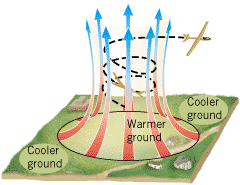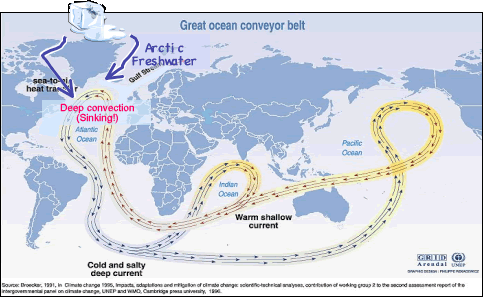 The Movement of Heat by Convection
The Movement of Heat by Convection
Heat can move from one place to another by the process of convection in any fluid (a word that includes liquids, gases and plasmas).
This happens when one part of the fluid has a higher temperature than its surroundings, and thus expands. When it expands it becomes less dense, and therefore rises, while the colder fluid rushes in below to fill the space.
The process of convection:
- is what makes all the water in a pot boil rather than just the water at the bottom

- is responsible for keeping lakes and oceans from freezing from the bottom up (see Water: the Great Anomaly handout)
- lets birds of prey and gliders fly without flapping their wings or using an engine
- is an essential part of many geologic processes

- is largely responsible for solar flares and the granulated appearance of the sun’s surface

- is responsible for the ‘great ocean conveyer belt’ which keeps the oceans circulating, which keeps much of Europe from freezing!
